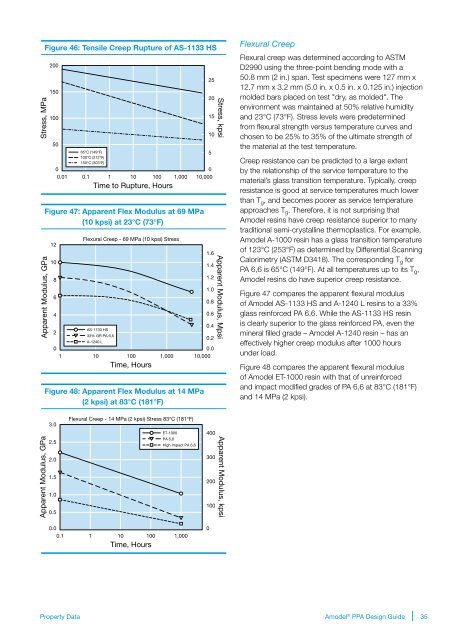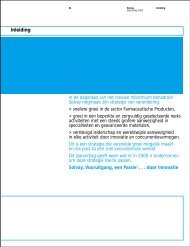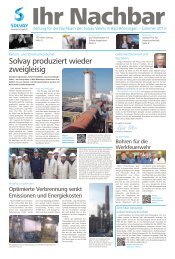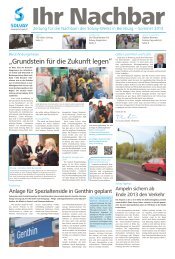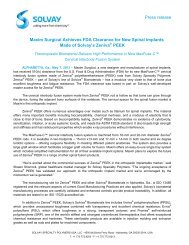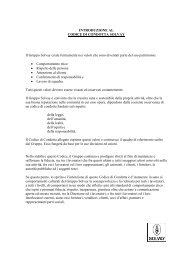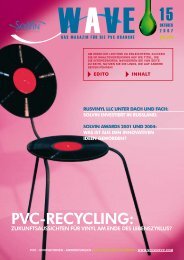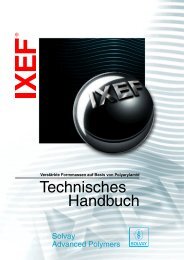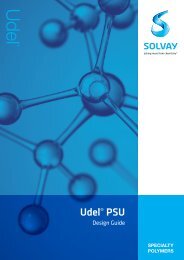Design Guide - Solvay Plastics
Design Guide - Solvay Plastics
Design Guide - Solvay Plastics
You also want an ePaper? Increase the reach of your titles
YUMPU automatically turns print PDFs into web optimized ePapers that Google loves.
Stress, MPa<br />
Apparent Modulus, GPa<br />
Figure 46: Tensile Creep Rupture of AS-1133 HS<br />
200<br />
150<br />
100<br />
50<br />
0<br />
65°C (149°F)<br />
100°C (212°F)<br />
150°C (303°F)<br />
0.01 0.1 1 10 100 1,000 10,000<br />
Time to Rupture, Hours<br />
Figure 47: Apparent Flex Modulus at 69 MPa<br />
(10 kpsi) at 23°C (73°F)<br />
12<br />
10<br />
8<br />
6<br />
Flexural Creep - 69 MPa (10 kpsi) Stress<br />
4<br />
0.6<br />
0.4<br />
AS-1133 HS<br />
2<br />
33% GR PA 6,6<br />
0.2<br />
A-1240 L<br />
0<br />
0.0<br />
1 10<br />
100 1,000 10,000<br />
Time, Hours<br />
Figure 48: Apparent Flex Modulus at 14 MPa<br />
(2 kpsi) at 83°C (181°F)<br />
25<br />
20<br />
15<br />
10<br />
5<br />
0<br />
1.6<br />
1.4<br />
1.2<br />
1.0<br />
0.8<br />
Stress, kpsi<br />
Apparent Modulus, Mpsi<br />
Flexural Creep<br />
Flexural creep was determined according to ASTM<br />
D2990 using the three-point bending mode with a<br />
50.8 mm (2 in.) span. Test specimens were 127 mm x<br />
12.7 mm x 3.2 mm (5.0 in. x 0.5 in. x 0.125 in.) injection<br />
molded bars placed on test "dry, as molded". The<br />
environment was maintained at 50% relative humidity<br />
and 23°C (73°F). Stress levels were predetermined<br />
from flexural strength versus temperature curves and<br />
chosen to be 25% to 35% of the ultimate strength of<br />
the material at the test temperature.<br />
Creep resistance can be predicted to a large extent<br />
by the relationship of the service temperature to the<br />
material’s glass transition temperature. Typically, creep<br />
resistance is good at service temperatures much lower<br />
than T g , and becomes poorer as service temperature<br />
approaches T g . Therefore, it is not surprising that<br />
Amodel resins have creep resistance superior to many<br />
traditional semi-crystalline thermoplastics. For example,<br />
Amodel A-1000 resin has a glass transition temperature<br />
of 123°C (253°F) as determined by Differential Scanning<br />
Calorimetry (ASTM D3418). The corresponding T g for<br />
PA 6,6 is 65°C (149°F). At all temperatures up to its T g ,<br />
Amodel resins do have superior creep resistance.<br />
Figure 47 compares the apparent flexural modulus<br />
of Amodel AS-1133 HS and A-1240 L resins to a 33%<br />
glass reinforced PA 6,6. While the AS-1133 HS resin<br />
is clearly superior to the glass reinforced PA, even the<br />
mineral filled grade – Amodel A-1240 resin – has an<br />
effectively higher creep modulus after 1000 hours<br />
under load.<br />
Figure 48 compares the apparent flexural modulus<br />
of Amodel ET-1000 resin with that of unreinforced<br />
and impact modified grades of PA 6,6 at 83°C (181°F)<br />
and 14 MPa (2 kpsi).<br />
Apparent Modulus, GPa<br />
3.0<br />
2.5<br />
2.0<br />
1.5<br />
1.0<br />
0.5<br />
Flexural Creep - 14 MPa (2 kpsi) Stress 83°C (181°F)<br />
ET-1000<br />
PA 6,6<br />
High Impact PA 6,6<br />
400<br />
300<br />
200<br />
100<br />
Apparent Modulus, kpsi<br />
0.0<br />
0.1 1 10 100 1,000<br />
Time, Hours<br />
0<br />
Property Data<br />
Amodel ® PPA <strong>Design</strong> <strong>Guide</strong><br />
35


